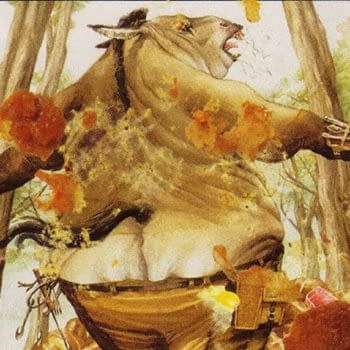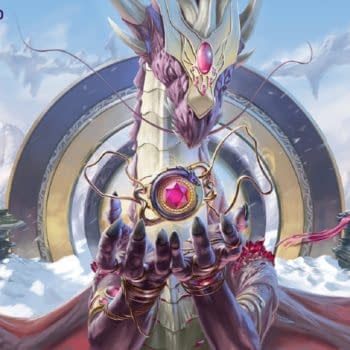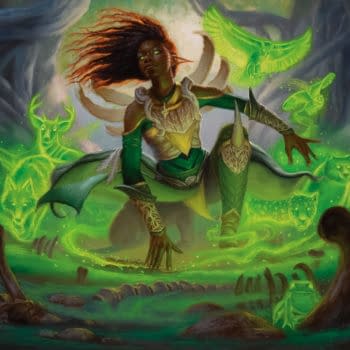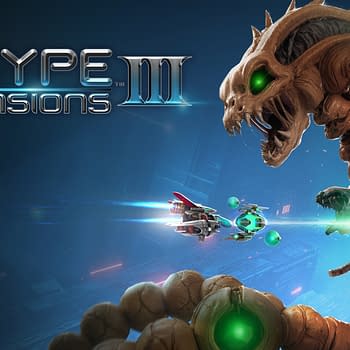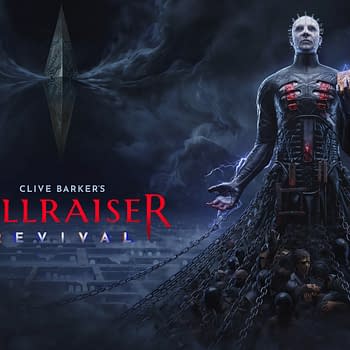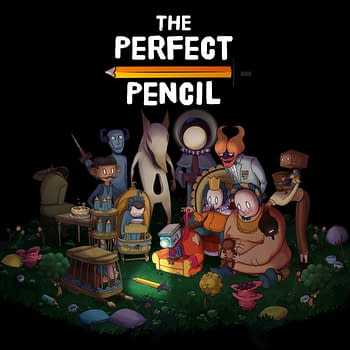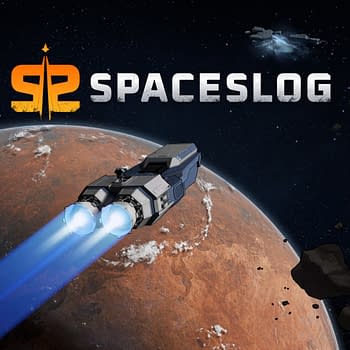Posted in: Card Games, Games, Magic: The Gathering, Tabletop, Wizards of the Coast | Tagged: card game, commander, deck tech, EDH, magic, Magic: The Gathering, MTG, TCG, wizards of the coast, WotC
"Marisi, Breaker of the Coil" Deck Tech – "Magic: The Gathering"
Magic: The Gathering has been a powerhouse of a game for the past 26 years. There are millions of players of this game at tables across the globe, and their newest venture, Arena, already has members numbering in the thousands. Wizards of the Coast is still making cards for an ever-growing, ever-hungry tabletop presence. And as you'd expect, Magic: The Gathering is continuing its trend of making extremely popular cards for the Commander format with the recent release of Commander 2019.
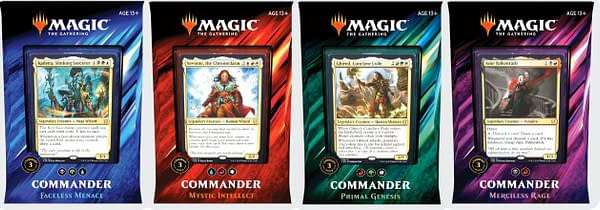
The Commander 2019 release is different from other Commander releases in that it specifically focuses on a select few famous mechanics from Magic's history: Morph, Flashback, Populate, and Madness. We at Bleeding Cool went over these decklists and how best to improve them on a minimal scale of 20 cards per deck. And now, we are focusing on a commander per deck that isn't the "face" of the precon (meaning, as I've stated in my previous articles on the matter, the commanders not on the front of the packaging). Last week, we went over Volrath, the Shapestealer and Pramikon, Sky Rampart. Today, we shall be looking at a prominent commander from the "Primal Genesis" Populate deck: Marisi, Breaker of the Coil.

The full list I made for this article can be found here.
Much unlike Pramikon, Sky Rampart, a deck that focuses solely on resilience for victory, Marisi is all about maintaining a stable and steady offense. The commander relies on forcing opponents to attack each other, weakening them until there is only one opponent left. The deck then aims to take that last opponent down with a force it has had time to amass amid the carnage. As a result, this deck is not too unlike Pramikon in a few ways.
All of this in mind, we have a few options to consider: What is the best way to get combat damage onto our opponents? Marisi needs this to happen each turn in order for opponents' creatures to be goaded. Do we use a wide token build, do we make creatures evasive? Do we just make them trample over opposing creatures in the process? There is definitely a number of angles we can take the deck. For this decklist, however, we will be focusing mostly on tokens, and then secondarily on boosting creatures in order to not only get trample damage in but also to prepare for an all-out slaughter for our last opponent.
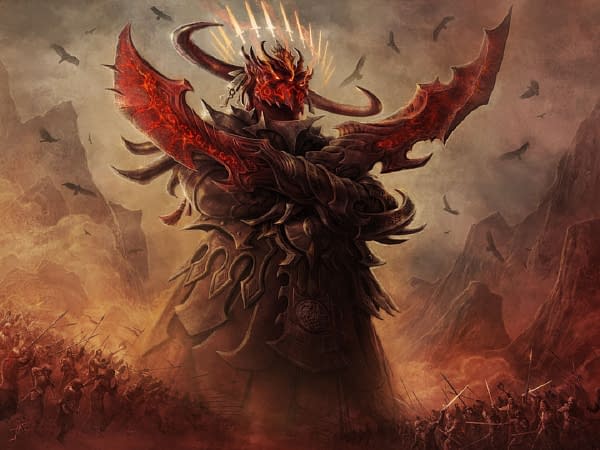
Notable Cards
Disrupt Decorum – If Marisi is not out, this card buys us exactly one round of opposing plays in order to get things back on track. It is equal parts offense and defensive piece, and like Marisi ensures that the average flow of the game is, well, disrupted.
Mirror March – A lot of our token producers rely on enter-the-battlefield (or "ETB") abilities to produce said tokens. To these ends, Mirror March can certainly create more than enough tokens that are literal copies of these creatures which should then, in turn, create even more tokens in the process.
Craterhoof Behemoth, End-Raze Forerunners, and Garruk Wildspeaker – Both of these cards are in the same "endgame" category for me, in that they provide an Overrun-style effect and a buff that almost always ought to clinch a game for you. Craterhoof is a bit expensive moneywise right now, but if you want the effect the Forerunners (or Garruk's last ability) ought to do enough, honestly.

Kiki-Jiki, Mirror Breaker and Zealous Conscripts – These two cards in conjunction with each other form a combo which results in infinitely-large numbers of the latter. This is relevant as even if you don't have enough power to get through for a win before this, the combo usually means you've won. And, if the opponent has a card which limits or stops attacks, the deck provides ways to make sure you can still at least get an attack or two in, meaning goading still ideally occurs.
Reconnaissance – This card is, arguably, the best card in any combat-oriented white deck ever. After you've dealt combat damage, attacking creatures you control are still technically in combat, so they effectively have vigilance thanks to this card. First strike creatures don't even have to suffer opposing damage if they're facing down something that lacks it. Reconnaissance is strictly amazing.
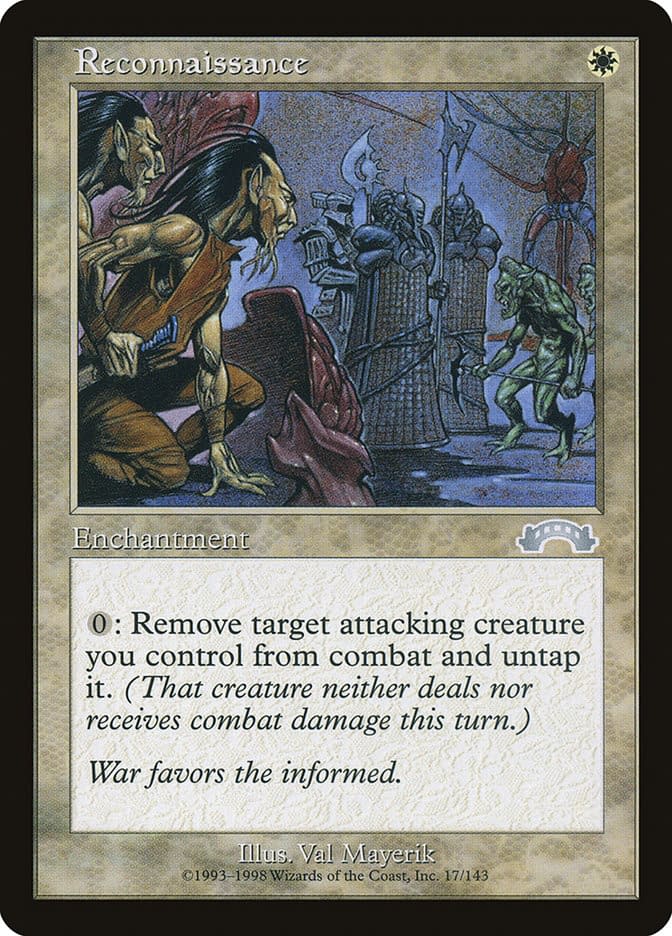
Avenger of Zendikar – When you need tokens en masse in a pinch, the Avenger of Zendikar is among the best choices you could have available to you. With the ability to make Plant tokens equal to the number of lands you control and then make them even bigger by playing a land right afterward, AoZ is up there with Craterhoof for optimal Tooth and Nail targets.
Bedlam – When you need to get through a veritable army in order to goad it, Bedlam is your best go-to Magic card. As long as you have protections in the form of goading, some pillow-fort cards (Blazing Archon, ideally!), or other such deterrents, you ought to not have a problem when creatures cannot block. Just make sure Marisi is out and capable of doing your dirty work before playing this one.
In Conclusion
This deck was made, like the others in this series, with a no-holds-barred attitude. There are many cards I aimed to omit from this list on account of budgetary restraint, but a few cards are still in the $40 range (looking at you, Craterhoof Behemoth!). Keep this in mind if you'd like to recreate my list for yourself. A few cards can absolutely be slotted in as substitutions, but this looks to be a great example of how to make this sort of deck.
I still have not tested this Magic deck out, as with the other two so far, but at the very least the deck looks good in theory. If you have any suggestions on how to make this Magic: the Gathering deck even better, please let me know below.


